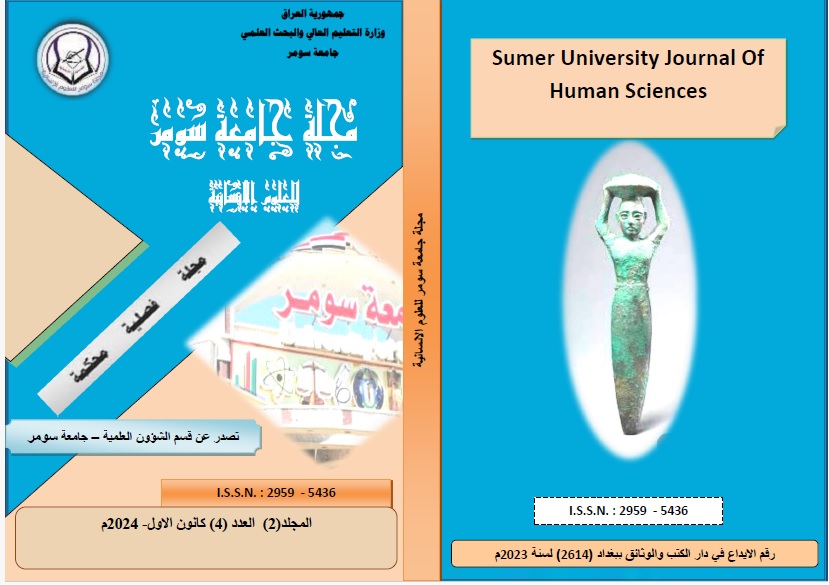The style of fanqalah in the rhetorical analyzes of Jarallah Al-Zamakhshari in Tafsir Al-Kashshaf
Abstract
The book “Revealing the Truths of Revelation and the Eyes of Sayings in the Faces of Interpretation” by Abu al-Qasim Mahmoud bin Omar bin Muhammad al-Zamakhshari al-Khwarizmi, known as Jarallah, is one of the oldest and most comprehensive Qur’anic interpretations that imbued the Mu’tazila approach in speech because its author, al-Zamakhshari, emerged in the fifth century AH from the great Mu’tazila men who were their imams. A significant impact on enriching Islamic thought. This article studies the style of fanqalah by Jar Allah Al-Zamakhshari in his rhetorical analyzes in his great interpretation Al-Kashshaf of the Truths of Revelation and the Eyes of Sayings in the Faces of Interpretation, relying on the descriptive and analytical approach The results of the research indicate that Al-Zamakhshari relied on the method of verses to approach many aspects and present and discuss different issues. It also allowed him to expand the meaning of the verses and enrich his interpretation with distinctive topics in various arts. Of rhetoric, grammar, morphology, drawing, doctrine, jurisprudence, and others. As for the assumptions related to rhetoric, they were the prominent aspect of Al-Kashaf, and Al-Zamakhshari employed the method of narrations to expand research into rhetorical issues that reveal the secret of systems Then, Al-Zamakhshari distinguished between metonymy and exposition and differentiated between them. Then the science of badi’ did not receive the attention that the other two sections of the science of rhetoric received, namely the science of rhetoric and the science of meanings. The reason for this from the point of view of the study goes back to his view of this branch as a tail of them. Therefore, he included his issues in the issues pertaining to these two sciences, such that the issue relates to explanation and meanings and overlaps with them


